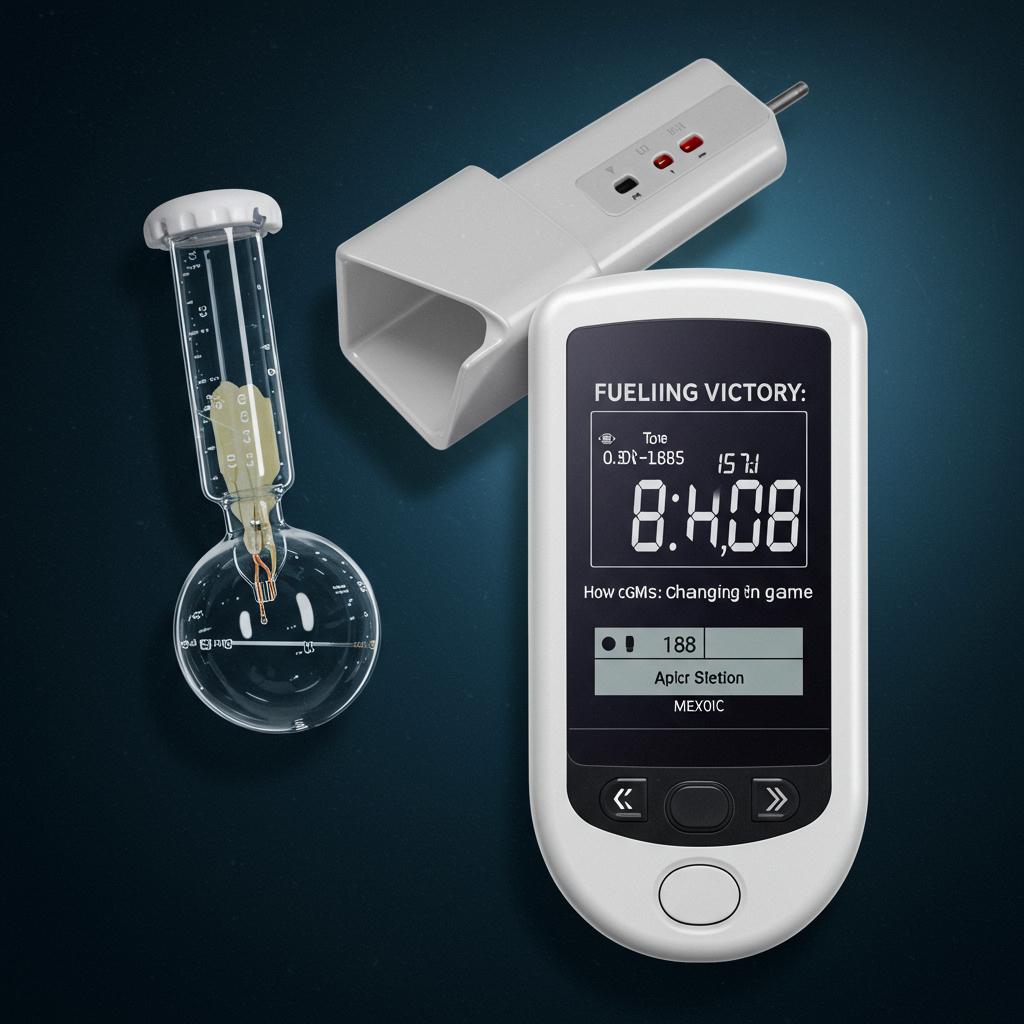
Ever wondered what’s really happening with your blood sugar during a tough workout or a big game? Continuous glucose monitors, or CGMs, are starting to make waves in the sports world, offering a glimpse into how our bodies use fuel in real-time. These little devices sit just under your skin and track your glucose levels every few minutes, giving you a constant stream of data. While they’ve been around for a while in healthcare, newer models are specifically designed for athletes, promising to help optimize performance and recovery.
So, what’s the big deal with CGMs in sports? The idea is that by seeing how your glucose levels fluctuate, you can fine-tune your nutrition strategy. Imagine knowing exactly when your energy stores are dipping and needing a boost, or if you’re consistently over-fueling. That kind of personalized information could be a game-changer. Manufacturers are even marketing them as a “fueling gauge,” suggesting they can help athletes push harder and see bigger gains.
Here’s a breakdown of the potential benefits:
- Monitoring Fueling Adequacy: CGMs could help athletes dial in their pre-game and during-event nutrition, ensuring they have enough energy to perform at their best. This could mean fewer energy crashes and more consistent performance.
- Personalized Nutrition Strategies: Everyone’s metabolism is different. CGMs could help athletes understand how their bodies respond to different foods and training loads, allowing them to create truly personalized nutrition plans.
- Improved Recovery: By tracking glucose levels post-workout, athletes can optimize their recovery strategies. This could involve timing nutrient intake more effectively to replenish glycogen stores and minimize muscle soreness.
- Research Applications: CGMs offer a powerful tool for researchers studying exercise physiology and nutrition. The detailed data they provide can help us better understand how the body fuels itself during different types of activity.
Sounds pretty amazing, right? But before you rush out to buy one, there are some important things to consider:
- Accuracy and Interpretation: While CGMs are getting better, they still measure glucose in the interstitial fluid (the fluid surrounding your cells), not directly in the bloodstream. This means there can be a slight lag compared to actual blood glucose levels. Plus, interpreting the data can be tricky. A qualified sports nutritionist or other healthcare professional can help you make sense of it all.
- Technical Issues: CGMs aren’t foolproof. Sensors can sometimes get dislodged during activity, and data synchronization issues can lead to lost information.
- Practical Considerations: CGMs can be expensive, and some sporting organizations may have rules about their use in competition. It’s always a good idea to check the regulations before using one in a race or game.
- The Complexity of Glucose Homeostasis: Blood sugar regulation is a complex process influenced by many factors, not just what you eat. Hormones, stress, sleep, and other factors all play a role. CGMs provide valuable data, but they don’t tell the whole story.
So, are CGMs the future of sports nutrition? The potential is certainly there, but more research is needed to understand how best to use them. If you’re considering using a CGM, it’s essential to work with a knowledgeable professional who can guide you through the process and help you interpret the data. They can help you determine if a CGM is right for you and how to integrate it into your overall training and nutrition plan.
